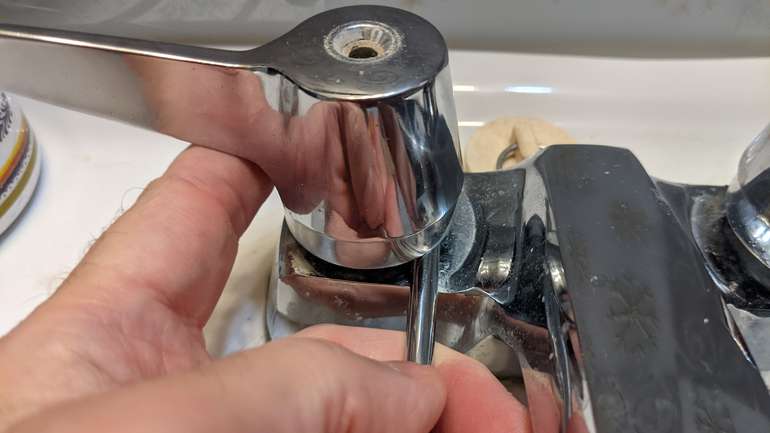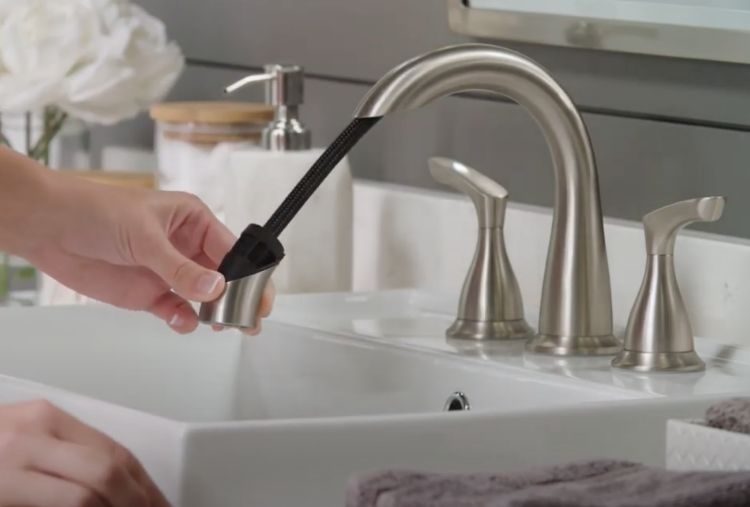Learning the Significance of Repairing a Broken Faucet
Learning the Significance of Repairing a Broken Faucet
Blog Article
Right here further down you will discover a bunch of outstanding ideas relating to Why It's Important to Fix Leaky Faucets.

Dripping taps could look like a small inconvenience, but their effect exceeds simply the annoyance of the sound. From wasting water to incurring unnecessary monetary expenses and health risks, overlooking a trickling tap can result in different repercussions. In this short article, we'll explore why it's important to address this common household concern without delay and properly.
Waste of Water
Environmental Impact
Trickling taps add dramatically to water waste. According to the Environmental Protection Agency (EPA), a solitary faucet trickling at one drip per second can throw away more than 3,000 gallons of water per year. This not just stress water resources however also influences communities and wildlife dependent on them.
Step-by-Step Guide to Fixing a Dripping Faucet
Devices Required
Prior to attempting to repair a trickling tap, gather the needed devices, including a flexible wrench, screwdrivers, substitute parts (such as washers or cartridges), and plumber's tape.
Common Faucet Issues and Their Solutions
Determine the sort of tap and the specific problem triggering the drip. Common issues include damaged washers, corroded shutoff seats, or faulty O-rings. Describe manufacturer directions or online tutorials for step-by-step assistance on repair services.
Financial Expenses
Boosted Water Costs
Past the ecological effect, trickling taps can inflate water expenses substantially. The accumulated wastage gradually equates right into greater utility expenses, which can have been stayed clear of with prompt fixings.
Potential Property Damage
Moreover, extended dripping can bring about damage to components and surfaces bordering the faucet. Water buildup can cause discoloration, corrosion, and also architectural concerns if left ignored, causing additional repair service costs.
Health and wellness Problems
Mold and Mildew Development
The constant presence of wetness from a trickling tap creates an excellent environment for mold and mildew development. These fungis not just endanger indoor air high quality yet also position health and wellness dangers, specifically for people with breathing problems or allergies.
Waterborne Illness
Stagnant water in dripping faucets can become a breeding ground for bacteria and various other virus, raising the danger of waterborne illness. Contaminants such as Legionella bacteria prosper in stagnant water, possibly leading to severe diseases when consumed or breathed in.
DIY vs. Professional Repair work
Advantages and disadvantages of DIY Repair Work
While some may attempt to repair a dripping tap themselves, DIY fixings include their very own set of obstacles. Without correct understanding and devices, DIY attempts can aggravate the issue or cause insufficient repair work, extending the issue.
Advantages of Hiring an Expert Plumber
Employing a specialist plumber ensures that the underlying reason for the leaking tap is attended to properly. Plumbers have the proficiency and equipment to diagnose and repair tap concerns successfully, conserving time and reducing the risk of more damages.
Ecological Responsibility
Individual Contribution to Preservation
Taking duty for dealing with trickling taps lines up with wider efforts towards water conservation and ecological sustainability. Every individual's actions jointly make a considerable effect on preserving priceless resources.
Sustainable Living Practices
By prioritizing timely fixings and taking on water-saving routines, individuals add to sustainable living techniques that profit both existing and future generations.
Preventive Measures
Normal Maintenance Tips
To stop dripping faucets, do regular maintenance such as cleaning aerators, evaluating for leaks, and changing damaged parts without delay. Additionally, take into consideration installing water-saving gadgets or upgrading to extra efficient components.
Value of Prompt Repair Works
Attending to trickling taps as quickly as they're discovered prevents additional water waste and possible damages, inevitably conserving both water and cash in the long run.
Impact on Home Worth
Assumption of Well-Maintained Property
Maintaining a residential property in good condition, consisting of dealing with maintenance issues like dripping faucets, improves its viewed value and value amongst possible purchasers or renters.
Impact on Resale Value
Properties with properly maintained plumbing components, including taps, command higher resale values in the property market. Attending to leaking faucets can add to a favorable impression throughout home inspections and settlements.
Conclusion
Dealing with a trickling faucet exceeds plain ease; it's a vital action towards conserving water, minimizing economic costs, and protecting wellness and property. Whether with do it yourself fixings or professional support, acting to take care of leaking taps is a little yet impactful method to promote responsible stewardship of resources and add to a much healthier, extra lasting future.
How to Fix a Leaky Faucet: Step-by-Step Repair Guide
A leaky faucet may seem like a simple annoyance, but if it's not fixed promptly, that leak could cost hundreds to potentially thousands. From water damage to mold, mildew, and high water bills, even a tiny leak can be catastrophic if left unattended. Damage like this can even affect the overall value of your home, so it's important to take the right approach for leaky faucet repair. You may need the help of a plumber in some cases, but we've got a few tips you can try on how to fix a leaky faucet before calling the pros.
Four Faucet Types
When you're learning how to fix a leaky faucet, the first step is knowing what kind of faucet you're working with! There are four common types.
Cartridge Faucets
Cartridge faucets come in one- or two-handled varieties. In one-handled cartridge faucets, hot and cold water combines in a single cartridge. In the two-handled versions, hot and cold water are controlled separately and mixed in the faucet.
Ball Faucets
Ball faucets have a single lever you push up and down to adjust the pressure and rotate to change the temperature. A slotted metal ball controls the amount of water allowed into the spout.
Compression Washer Faucets
They're the oldest type of faucet, but they're still used in many homes — especially older ones. Compression faucets have two separate handles that, when turned, raise or lower the washer that seals a water valve. This valve stops water from flowing through the faucet when it is turned off.
Disc Faucets
Disc faucets rarely need to be repaired due to their maintenance-free design. The water flow is controlled by two discs — the upper one raises and lowers against a fixed lower disc, creating a watertight seal. If your disc faucet starts leaking, you may need to replace the seals or clean residue buildup from the inlets.
Fixing a Leaky Faucet
Step 1: Turn Off the Water
Whether you're learning how to fix a leaky bathtub faucet or how to fix a leaky kitchen faucet, always turn off the water supply to your working area when you're fixing a leak. The last thing you want is a flood added to your list of things to fix.
Look for the shutoff valves below your sink or around the tub and turn them clockwise to stop the water flow. If your faucet doesn't have shutoff valves, you may need to turn off the water for the whole house. Check to make sure it's off by turning the faucet on. If nothing comes out, you're ready to start the repair.
Step 2: Take Apart the Faucet
How you disassemble your faucet depends on the type of fixture you have. You can use a flathead screwdriver to remove the caps on top of the handle or handles for cartridge and compression faucets. Inside, you should see handle screws. Unscrew these with a screwdriver to remove the handle.
Disc- and ball-style faucets will typically have an inlet screw near the handle, and removing that will reveal the interior of the faucet.
Detach the Valve Stem
For cartridge- and compression-style faucets, you'll see the inner valve stem or cartridge once you remove the faucet handles. If you have a compression faucet, unscrew the brass valve stem. If you have a cartridge faucet, pull out the cartridge. If your cartridge has been in place for a while, it may require some tools or extra force to remove it due to mineral deposits.
Examine and Replace Parts
Once you've removed the parts, check them out to confirm what needs to be replaced. You may see corroded rubber washers, O-rings, stems, or cartridges. On a ball-style faucet, check the seats and springs for damage.
If you need to repair a leaky disc faucet, check the inlet and seals on the lower disc.
Once you determine what parts must be replaced, visit your local hardware store. Bring the damaged parts with you to ensure you can purchase the correct components to replace them.
Clean Valves and Faucet Cavity
If you've removed a stem or cartridge, you may notice mineral buildup in the faucet's threads. Use white vinegar to clean the valve seat by soaking it for a few minutes, then scrub it away with a soft toothbrush and rinse with warm water. You can also clean the interior of the faucet in the same way.
Reassemble the Faucet
Once your faucet is cleaned and the required parts have been replaced, it's time to reassemble it. Put the pieces back together and slowly turn the water supply back on. Doing this slowly is crucial because too much initial water pressure can damage the new hardware you've just installed.
https://homewarranty.firstam.com/blog/how-to-fix-leaky-faucet

I'm certainly very enthusiastic about Leaky Faucets: Why They Happen & What to Do About Them and I am praying you liked the new piece. Enjoyed reading our blog posting? Please share it. Let someone else check it out. Many thanks for taking the time to read it.
Report this page